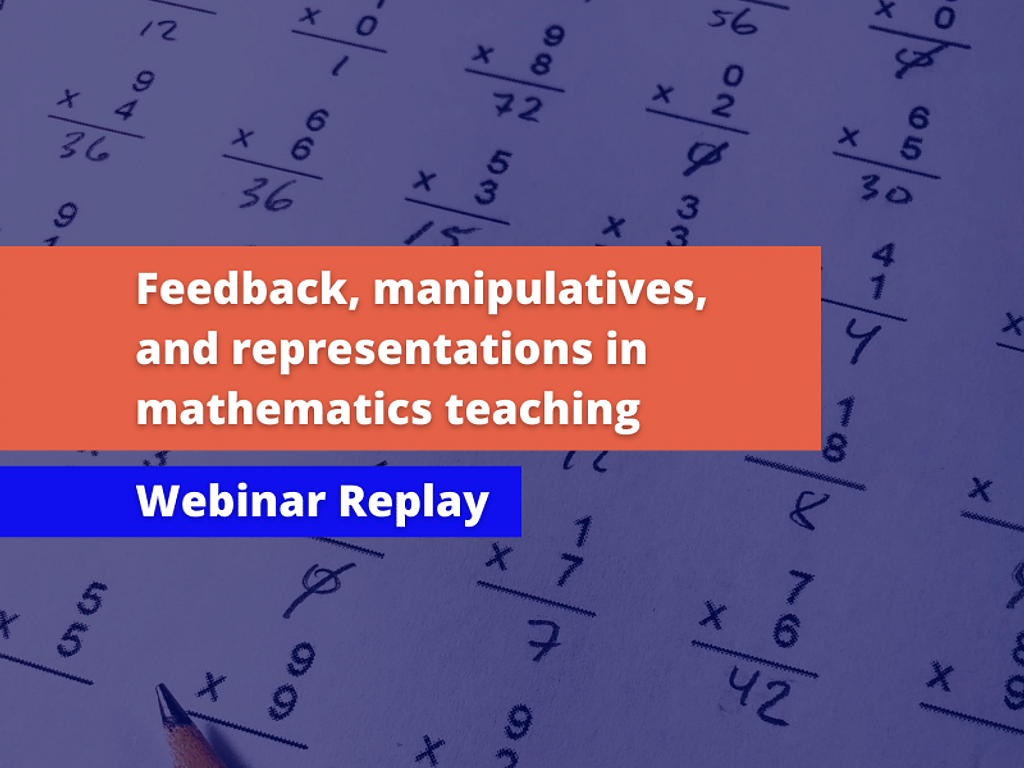Evidence for Learning: Improving mathematics in upper primary and lower secondary
Improving mathematics in upper primary and lower secondary
Download the Recommendations Poster
Uploaded: • 54.5 KB - pdfFirst Edition
Published
School Phase
Secondary, Primary
This guide was developed by reviewing the best available international research and consulting experts, teachers, and academics to arrive at key principles for effective teaching of mathematics.
This Guidance Report offers eight practical, evidence‑based recommendations – that are relevant to all students in upper primary and lower secondary – but particularly to those struggling with their mathematics.1
Students who are falling behind in maths, come disproportionately from disadvantaged homes. A 15‑year‑old from a low socio‑economic background is nearly four times more likely to be below expected levels for maths achievement than classmates from more advantaged homes.
This guide is aimed primarily at subject leaders, principals, and other staff with responsibility for leading improvements in mathematics teaching. It is not intended to provide a comprehensive guide to mathematics teaching, but rather makes recommendations where there are research findings that schools can use to make a significant difference to students’ learning, and has focused on the questions that appear to be most salient to practitioners.
Recommendation 1: Use assessment to build on students’ existing knowledge and understanding.
Recommendation 2: Use manipulatives and representations.
Recommendation 3: Teach strategies for solving problems.
Recommendation 4: Enable students to develop a rich network of mathematical knowledge.
Recommendation 5: Develop students’ independence and motivation.
Recommendation 6: Use tasks and resources to challenge and support students’ mathematics.
Recommendation 7: Use structured interventions to provide additional support.
Recommendation 8: Support students to make a successful transition between primary and secondary school.
Evidence for Learning has produced another Guidance Report Putting Evidence to Work: A School’s Guide to Implementation which can be used as a guide as you plan to implement changes in your school relating to improving mathematics.
Implementation can be described as a series of stages relating to thinking about, preparing for, delivering, and sustaining change. The section Acting on the evidence, suggests a range of strategies that you might find helpful in planning, structuring and delivering a whole‑school approach to mathematics.
1. Thomson, Sue; De Bortoli, Lisa & Underwood, Catherine 2016, PISA 2015: A first look at Australia’s results, Australian Council for Educational Research, Camberwell. acer.org/au/ozpisa.
This Guidance Report and supporting materials are licensed under a Creative Commons licence as outlined below. Permission may be granted for derivatives, please contact Evidence for Learning for more information.
This work is licensed under a Creative Commons Attribution-NonCommercial-NoDerivatives 4.0 International Licence.
Download the Guidance Report
Uploaded: • 4.7 MB - pdfDownload the Recommendations Poster
Uploaded: • 54.5 KB - pdf
Webinars

Guidance Reports